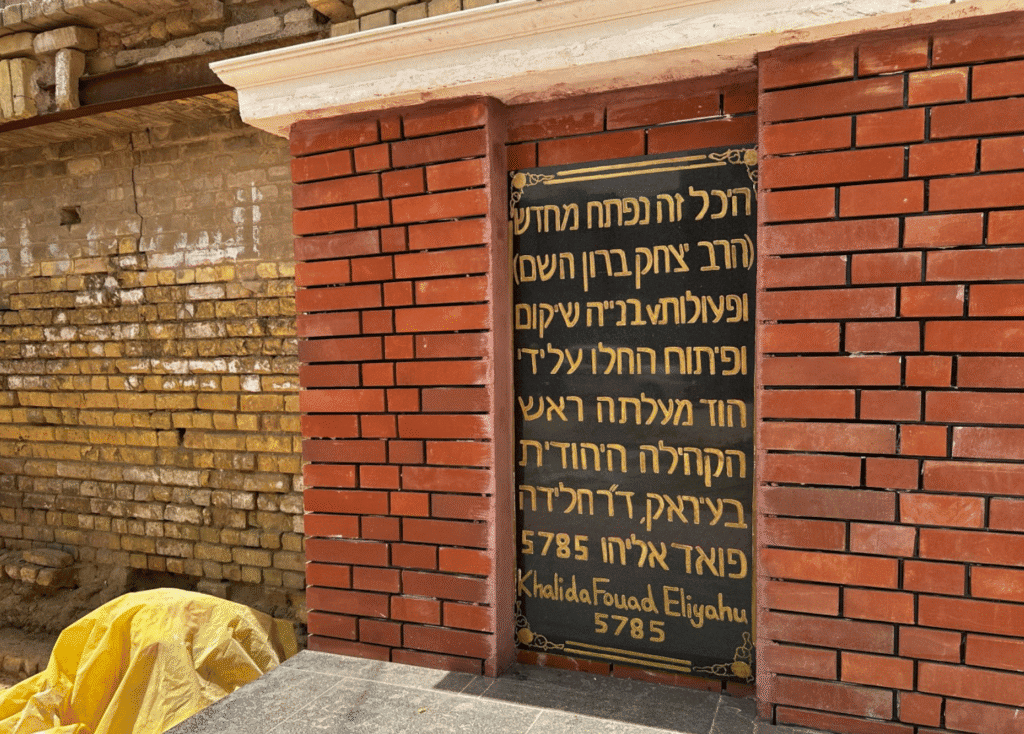Myths and legends of Sheikh Yitzhak Gaon
The restoration of the mausoleum of Sheikh Yitzhak Gaon, in the old Suq Hanoon quarter of Baghdad, (reported on Point of No Return here) has prompted historian Sami Sourani to recall some interesting myths and legends associated with the Sheikh’s shrine.

Yitzhak al-Muslawi was a capable 7th century Jewish doctor from Mosul. He was appointed treasurer by the Caliph Ali bin Abi Taleb who conferred on him the honorific title of Sheikh. At the time, the Jews were useful to the Arabs who were fighting Persian domination of Mesopotamia.
The story is told that the Jews would cook on charcoal their Sabbath dish of chicken and rice, Tbeet. The copper pot would be placed on the outer wall of the house to cool until it could be eaten at noon on Shabbat. Its aroma tickled the nostrils of the Arab soldiers: they snatched the pots and made off on horseback, leaving the Jews with no Shabbat lunch. After several such incidents, the Jews complained to Sheikh Yitzhak. The Sheikh went to Caliph Ali bin Abi Taleb. He hit on a solution by issuing a fatwa declaring that Muslims cannot eat the food of Jews. Shortly afterwards, The Caliph was assassinated and the Sheikh passed away.
The reason for the ban was forgotten, and the religious Ulema eventually found an explanation: ‘Jews are dirty’. This, claims Sami Sourani, is how the concept of the untouchable Jew came to the (Shi’a) Arab world.
Sheikh Yitzhak’s place of burial included a yeshiva, Talmud Torah school and synagogue. Jewish visitors would come to pray for help with their problems or a cure for sickness. In Sami’s day, meals would be donated to the schoolchildren or yeshiva students.
Over the centuries the building became run down and by the time of the British mandate it was decided that the shrine of Sheikh Yitzhak should be demolished. But the newly created municipality of Baghdad found no Jew, Christian or Muslim willing to do the job. They believed that it was a holy place and did not dare lift a finger against a holy man who had done such favours for the residents of Baghdad.
Finally, a Muslim was found who was willing to do the demolition job. He found himself a special axe with a very long handle. He spent hours sharpening the axe. As the day came around for him to start work, many people came to watch. He stood on the tomb and lifted up the axe with both hands before bringing it crashing down onto the tomb. The metal part detached itself from the handle flew in the air and boomeranged back on him, severing one of his legs. He fell bleeding and screaming for help, but the onlookers ran away. The Jews shouted that Hashem had passed judgement on the man, and the Muslims cried ‘Allahu Akbar’. They were too afraid to return and help the sinner.
A few days later, Jews amd Muslims convinced the local authorities to repair, rather than demolish, the building.
After the exodus of the Jews in 1950-1, the place fell into disrepair. In 2003, after the US invasion, a Jew visited the mausoleum. He discovered that a Muslim who lived nearby had volunteered to protect it, installing chains on the door. As a child he had been sick and a Jewish woman had advised his mother to take him there and pray for him to be healed by touching the tomb. He grew up healthy and strong and felt it was his duty to return the favour.
How Iraqi Jews got their surnames – and more from Sami Sourani




Leave a Reply